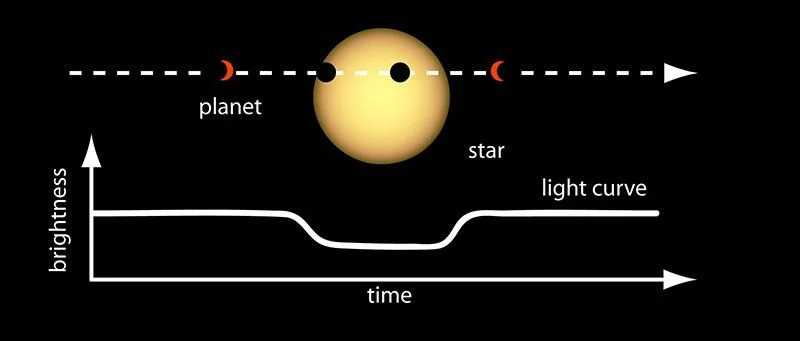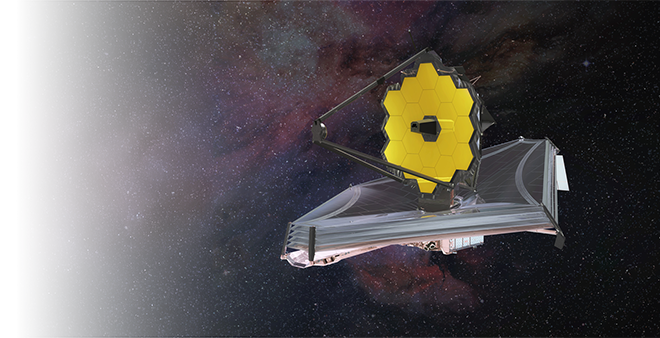The atmospheres of exoplanets are studied using spectroscopic observations made with large telescopes, such as JWST.
Spectroscopic observations are made using a range of different methods depending on the planet properties; a review of this topic can be found in Madhusudhan (2019). Atmospheric observations of candidate hycean worlds are conducted primarily using transmission spectroscopy obtained as the planet transits in front of the host star.

The transit method is one of the primary methods for discovering and characterising exoplanets. This method relies on the exoplanet eclipsing its host star from our point of view, blocking some of the starlight during the eclipse (referred to as a ‘transit’). By measuring the change in brightness of the star during transit, we can infer the size of the planet. The thickness of the atmosphere, which makes a small contribution to the planet radius, can vary with wavelength depending on the atmospheric composition. However, large telescopes such as JWST provide the sensitivity required to measure these small contributions from the planetary atmosphere.

During a transit event, some of the light from the host star passes through the planet’s atmosphere before reaching the telescope, and is attenuated at different levels at different wavelengths depending on the chemicals in the atmosphere. The resulting attenuation as a function of wavelength, also known as a transmission spectrum, contains information about the planet’s atmospheric properties, such as composition, temperature structure, and presence of clouds/hazes. These properties can be derived from the transmission spectrum using atmospheric retrieval methods, as discussed here.
Receive Email Updates
As we add news and content to the website, we'll email you to keep you updated!


